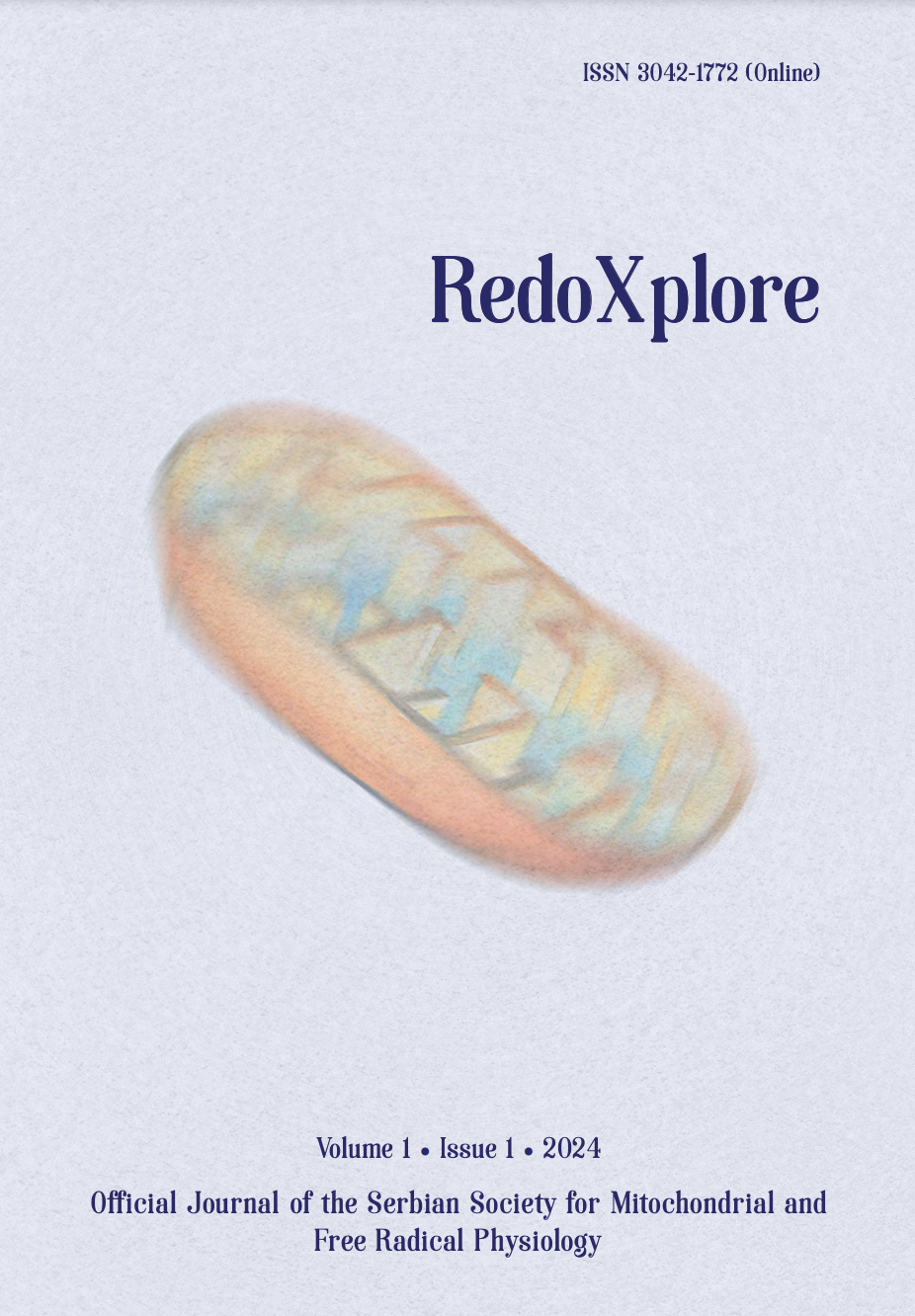
More articles from Volume 1, Issue 1, 2024
REDOX AND METABOLIC REPROGRAMMING OF BREAST CANCER CELLS AND ASSOCIATED ADIPOSE TISSUE - THE CORNERSTONES OF ADAPTIVE TUMOUR BEHAVIOUR
INSULIN MODULATES MITOCHONDRIAL STRUCTURAL AND FUNCTIONAL MOSAICISM IN BROWN ADIPOCYTES
NITRITE MITIGATES OXIDATIVE BURST IN ISCHEMIA/REPERFUSION IN BRAIN SLICES
NITRIC OXIDE, SUPEROXIDE AND PEROXYNITRITE – REDOX REGULATION OF THE CARDIOVASCULAR SYSTEM BY NITRO-OXIDATIVE STRESS AND S-NITROS(YL)ATION
DIETARY NITRATE AS PIVOT ON THE GUT MICROBIOTA-HOST REDOX COMMUNICATION
PREDICTIVE VALUE OF TOTAL OXIDANT STATUS AND TOTAL ANTIOXIDANT STATUS IN NON-ALCOHOLIC FATTY LIVER DISEASE
Department of Medical Biochemistry, Faculty of Pharmacy, University of Belgrade , Belgrade , Serbia
Department of Medical Biochemistry, Faculty of Pharmacy, University of Belgrade , Belgrade , Serbia
Clinic of Internal Medicine, University Medical Center Zemun , Belgrade , Serbia
Clinical Department of Gastroenterology and Hepatology, University Medical Center Zvezdara , Belgrade , Serbia
Department of Laboratory Diagnostics, University Medical Center Zemun , Belgrade , Serbia
Department of Medical Biochemistry, Faculty of Pharmacy, University of Belgrade , Belgrade , Serbia
Editor: Bato Korac
Published: 29.08.2024.
Short oral presentations
Volume 1, Issue 1 (2024)
Abstract
According to global epidemiology, non-alcoholic fatty liver disease (NAFLD) is the most common chronic liver disease, affecting about a quarter of the adult population worldwide. NAFLD is characterised by the accumulation of triglycerides in hepatocytes (steatosis), which can progress to non-alcoholic steatohepatitis, a more severe form of NAFLD. Oxidative stress is closely linked to the disease progression due to the activation of inflammatory pathways. The aim of this study was to identify markers of redox status that could predict the risk of developing steatosis. The study included 179 participants who underwent ultrasound examination at University Medical Centers Zemun and Zvezdara. Participants were divided into two groups: 119 patients with steatosis and 60 apparently healthy controls (control group, CG). Biochemical markers as well as markers of redox status: total oxidant status (TOS) and total antioxidant status (TAS) were determined in serum spectrophotometrically on biochemical analysers. Univariate and multivariate binary logistic regression analyses were used to test the predictions of TOS and TAS for NAFLD. Patients had higher body mass index (P<0.001), glucose (P<0.001), uric acid (P<0.001), TOS (P=0.007), and TAS (P<0.001) levels compared to CG. Univariate binary regression analysis revealed significant predictive capability of TOS and TAS for NAFLD demonstrated by the following ORs: 1.104 (1.020-1.195) (P=0.014) and 1.003 (1.001-1.004) (P<0.001), respectively. After applying multivariate binary logistic regression analyses (adjustments were made for sex and BMI), TOS and TAS kept independent significant predictive capability for NAFLD, as demonstrated by the following ORs: 1.098 (1.009-1.195) (P=0.030) and 1.002 (1.000-1.003) (P=0.026), respectively. TOS and TAS are positively associated with the risk of developing NAFLD, independent of sex and BMI. Both markers are elevated, probably because increased oxidative activity requires a stronger antioxidant defence response, which should be confirmed by a follow-up study including more participants.
Citation
Copyright

This work is licensed under a Creative Commons Attribution-NonCommercial-ShareAlike 4.0 International License.
Article metrics
The statements, opinions and data contained in the journal are solely those of the individual authors and contributors and not of the publisher and the editor(s). We stay neutral with regard to jurisdictional claims in published maps and institutional affiliations.






